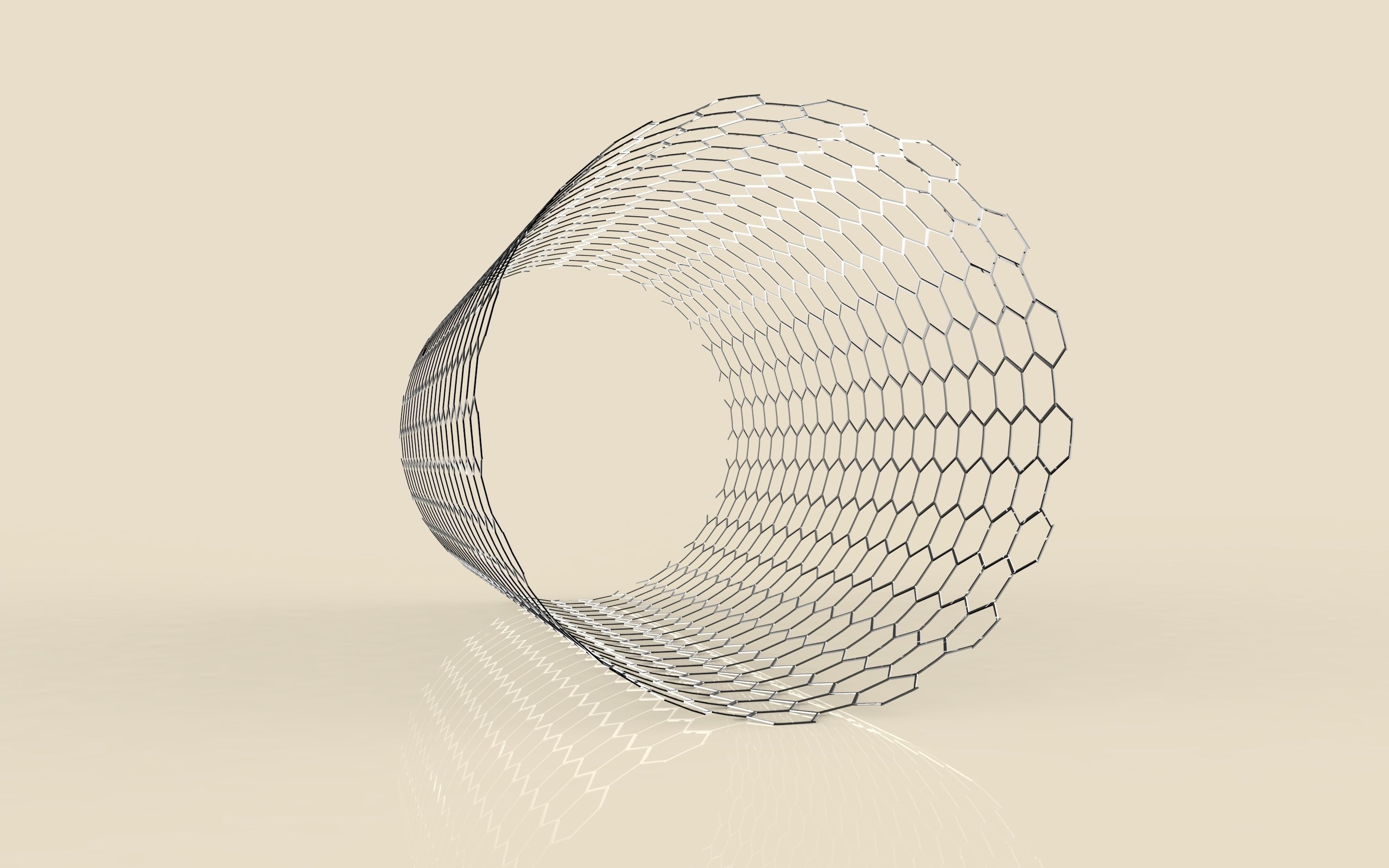

Since w = 3 u + 1 v, the tube is said to be of type (3,1).Īlternatively, the structure can be described by two integer indices ( n, m) that describe the width and direction of that hypothetical strip as coordinates in a fundamental reference frame of the graphene lattice. The vector w (large blue arrow) connects corresponding positions on the two edges of the strip.
#CRYSTALVIEWER CARBONNANO TUBE DIAMETER FULL#
Spectroscopic methods offer the possibility of quick and non-destructive characterization of relatively large amounts of carbon nanotubes, yielding detailed measurements of non-tubular carbon content, tube type and chirality, structural defects, and many other properties that are relevant to those other applications.Ī "sliced and unrolled" representation of a carbon nanotube as a strip of a graphene molecule, overlaid on a diagram of the full molecule (faint background). Īpart from direct applications, the optical properties of carbon nanotubes can be very useful in their manufacture and application to other fields. Potential applications that have been demonstrated include light emitting diodes ( LEDs), bolometers and optoelectronic memory. Some properties that may lead to practical use include tuneability and wavelength selectivity. Īpplications of carbon nanotubes in optics and photonics are still less developed than in other fields. Consequently, all the electronic, optical, electrochemical and mechanical properties of the carbon nanotubes are extremely anisotropic (directionally dependent) and tunable. However, the length can reach 55.5 cm (21.9 in), implying a length-to-diameter ratio as high as 132,000,000:1 which is unequaled by any other material. The diameter typically varies from 0.4 to 40 nm (i.e., a range of ~100 times). The way those materials interact with electromagnetic radiation is unique in many respects, as evidenced by their peculiar absorption, photoluminescence ( fluorescence), and Raman spectra.Ĭarbon nanotubes are unique "one-dimensional" materials, whose hollow fibers (tubes) have a unique and highly ordered atomic and electronic structure, and can be made in a wide range of dimension.

The optical properties of carbon nanotubes are highly relevant for materials science.


 0 kommentar(er)
0 kommentar(er)
